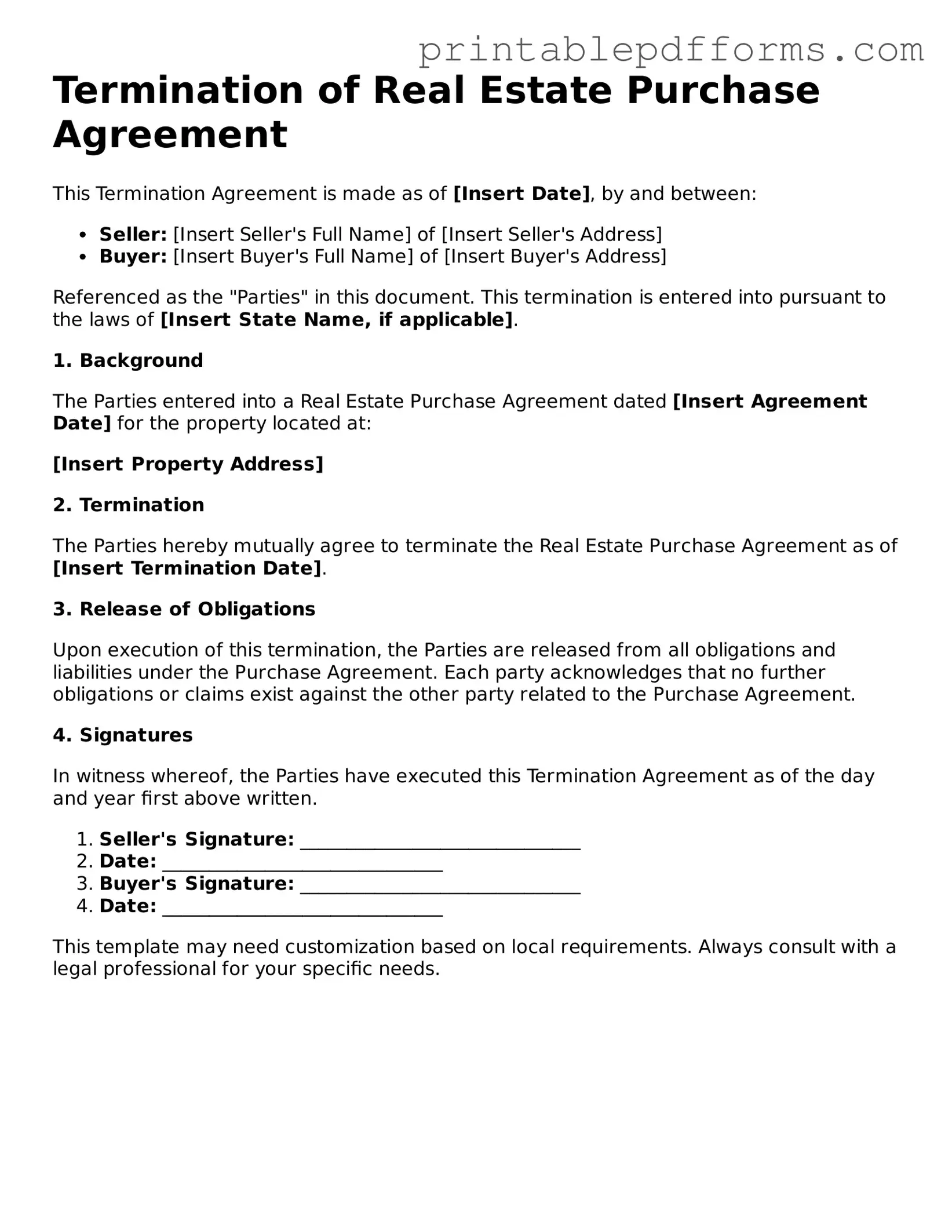The Termination of Real Estate Purchase Agreement form is a document used to formally end a real estate purchase agreement between a buyer and a seller. This form outlines the reasons for termination and ensures that both parties acknowledge the cancellation of the agreement.
This form should be used when both parties agree to terminate the real estate purchase agreement. Common scenarios include:
-
Mutual agreement to cancel the transaction.
-
Failure to meet contingencies outlined in the original agreement.
-
Issues discovered during inspections that cannot be resolved.
-
Changes in the buyer's financial situation.
Both the buyer and the seller must sign the termination form. Their signatures indicate that they both agree to the cancellation of the purchase agreement. If there are any co-signers or agents involved, their signatures may also be required to finalize the termination.
Once the Termination of Real Estate Purchase Agreement form is signed by all parties, the agreement is officially terminated. It is advisable to provide copies of the signed form to all parties involved for their records. This helps ensure that everyone is on the same page and protects against any future misunderstandings.
Are there any fees associated with terminating a real estate purchase agreement?
While the termination itself may not incur fees, there could be costs associated with any inspections, appraisals, or other services that were performed prior to the termination. Additionally, if any earnest money was deposited, the terms of the original agreement will dictate whether it is refundable or forfeited.
Can I terminate the agreement unilaterally?
Generally, you cannot unilaterally terminate a real estate purchase agreement unless specific conditions outlined in the agreement allow for it. If you believe you have grounds for unilateral termination, it is crucial to review the terms of the agreement and consult with a real estate professional for guidance.
What if one party does not agree to the termination?
If one party does not agree to the termination, the situation may require negotiation or mediation. It is essential to communicate openly and attempt to reach a mutual agreement. If an agreement cannot be reached, legal advice may be necessary to understand your options moving forward.
While there is no universally mandated format for the Termination of Real Estate Purchase Agreement form, it should include essential elements such as:
-
The names of the buyer and seller.
-
The property address.
-
The date of the original purchase agreement.
-
The reasons for termination.
-
Signatures of both parties.
Using a clear and concise format will help avoid confusion and ensure that all necessary information is included.
Can I re-enter a real estate agreement after termination?
Yes, you can re-enter a real estate agreement after termination. However, it is essential to address any issues that led to the initial termination before moving forward. Open communication and transparency with the other party will help facilitate a smoother transaction in the future.
You can obtain a Termination of Real Estate Purchase Agreement form from various sources, including real estate agents, attorneys, or online legal document services. Ensure that the form you choose is appropriate for your state and complies with local regulations.
